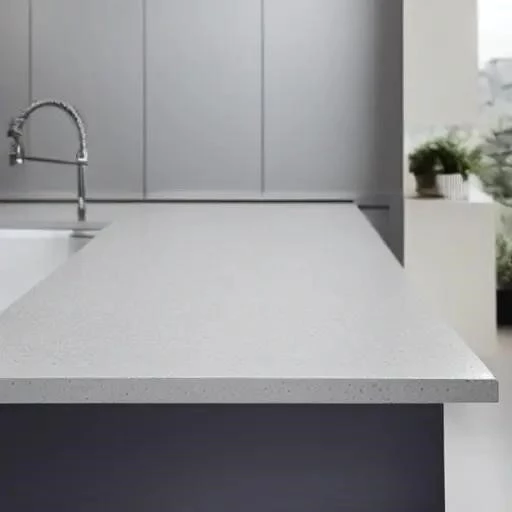The kitchen, long revered as the heart of the home, is undergoing a magnificent transformation, evolving from a mere utilitarian space into a vibrant hub of culinary creativity and social connection. At the core of this evolution, dictating both functionality and aesthetic allure, are the kitchen countertops. Far more than just surfaces for meal preparation, these essential elements serve as the grand stage for daily life, silently orchestrating the flow and feel of one of the most important rooms in any residence. Choosing the right design can dramatically elevate your home’s value and your daily living experience, seamlessly blending practicality with breathtaking beauty.
Today’s homeowners are increasingly discerning, seeking not just durability but also designs that reflect their personal style and future aspirations. The market is brimming with an incredible array of materials and finishes, each offering unique advantages and contributing distinctively to a kitchen’s overall narrative. From the sleek sophistication of engineered stones to the timeless charm of natural slabs, understanding the popular designs for kitchen countertops is paramount for anyone envisioning a modern, optimized living space. This exciting landscape of innovation promises a future where every kitchen is a masterpiece, perfectly tailored to its inhabitants’ desires and daily routines, truly revolutionizing home environments.
Popular Kitchen Countertop Materials: An Overview
For those embarking on a kitchen renovation or simply dreaming of an upgrade, understanding the core characteristics of today’s leading countertop materials is incredibly beneficial. This table provides a quick guide to help you navigate the myriad choices available, each offering a distinct blend of aesthetics, durability, and maintenance requirements.
| Material | Key Features | Pros | Cons | Common Design Styles | Reference |
|---|---|---|---|---|---|
| Quartz (Engineered Stone) | Non-porous, highly durable, wide color/pattern range, consistent appearance. | Extremely low maintenance, stain-resistant, hygienic, does not require sealing. | Can be more expensive than some natural stones, less heat resistant than granite. | Modern, Contemporary, Transitional, Industrial. | Silestone by Cosentino |
| Granite (Natural Stone) | Unique natural patterns, highly durable, excellent heat resistance. | Adds significant value, very hard-wearing, available in diverse colors. | Requires periodic sealing, can stain if not sealed, heavy and needs strong cabinetry. | Traditional, Rustic, Mediterranean, Classic. | Marble & Granite, Inc. |
| Marble (Natural Stone) | Luxurious veining, classic elegance, naturally cool to the touch. | Timeless beauty, unique look, great for baking (stays cool). | Porous and prone to etching/staining, requires diligent maintenance and sealing. | Luxury, Classic, Parisian, Farmhouse (Carrara). | Natural Stone Institute |
| Porcelain/Sintered Stone | Ultra-compact, non-porous, extremely durable, can mimic other materials. | Highly resistant to heat, scratches, UV, and stains; very thin profiles possible. | Installation can be complex and expensive; limited edge profile options. | Ultra-Modern, Minimalist, Industrial, Contemporary. | Dekton by Cosentino |
| Solid Surface (e.g., Corian) | Seamless appearance, non-porous, repairable, wide color palette. | Integrated sinks possible, easy to clean, warm to the touch, repairable scratches. | Less heat resistant than stone, can scratch more easily, can dull over time. | Transitional, Contemporary, Mid-Century Modern. | Corian Design |
| Butcher Block (Wood) | Natural warmth, eco-friendly, can be refinished. | Affordable, adds character, soft on dishes, can be DIY-friendly. | Requires regular oiling/sealing, prone to scratches and water damage if not maintained. | Farmhouse, Rustic, Traditional, Scandinavian. | LL Flooring (Lumber Liquidators) |
Quartz: The Unrivaled Champion of Modern Kitchens
Leading the charge in contemporary kitchen design is quartz, an engineered stone that has remarkably ascended to superstar status. Crafted from ground quartz particles combined with resins, pigments, and often recycled materials, this material offers unparalleled advantages. Its non-porous surface not only makes it incredibly hygienic and stain-resistant but also eradicates the need for sealing, a significant convenience for busy households. The aesthetic versatility of quartz is truly astounding; manufacturers can replicate the intricate veining of natural marble, the speckled beauty of granite, or create entirely new, vibrant patterns and solid colors. “Quartz has fundamentally transformed how designers approach kitchen aesthetics,” explains renowned interior architect, Anya Sharma. “It provides the high-end look clients crave without the intensive maintenance, making it a remarkably effective solution for modern living.” This adaptability, coupled with its robust durability, cements quartz’s position as a forward-thinking choice for any aspiring kitchen renovation.
Natural Stone: Enduring Elegance and Unique Character
Despite the rise of engineered alternatives, natural stone, particularly granite and marble, continues to captivate homeowners with its inherent beauty and timeless appeal. Granite, formed over millennia under immense pressure, offers a distinct, individualistic pattern in every slab, ensuring your kitchen possesses a truly unique personality. Renowned for its exceptional heat and scratch resistance, granite remains a formidable choice for high-traffic cooking areas, embodying an enduring strength. Marble, conversely, is celebrated for its ethereal beauty, its soft, elegant veining evoking a sense of classical luxury. While undeniably stunning, marble does demand a more conscientious approach to maintenance, being susceptible to etching from acidic substances. Yet, for many, the patina developed over years of use only adds to its storied charm, making it a cherished centerpiece in countless sophisticated homes, a testament to its lasting allure.
The Warmth of Wood and the Edge of Emerging Materials
Beyond the stone spectrum, butcher block countertops, meticulously crafted from strips of wood, infuse kitchens with an inviting warmth and organic texture. Ideal for farmhouse, rustic, or even Scandinavian-inspired designs, wood provides a tactile experience, softening the often-hard edges of a modern kitchen. While requiring more diligent care and regular oiling to maintain its luster and prevent water damage, its ability to be sanded and refinished gives it an incredibly long lifespan. Simultaneously, the industry is witnessing the exciting emergence of new materials like ultra-compact porcelain and sintered stone. These innovative surfaces, created using advanced manufacturing processes, boast extreme resistance to heat, scratches, and UV light, offering unprecedented durability and the ability to achieve incredibly thin, sleek profiles. By integrating insights from cutting-edge material science, these options are rapidly becoming favorites for minimalist and industrial designs, pushing the boundaries of what’s possible in kitchen aesthetics.
Future-Proofing Your Kitchen: Trends and Personalization
Looking ahead, the trajectory of kitchen countertop design points toward even greater personalization and integration with smart home technologies. Imagine surfaces that wirelessly charge your devices or display recipes, seamlessly blending utility with advanced innovation. Current trends are emphasizing integrated sinks and subtly mitered edges for a streamlined, minimalist look, alongside a growing preference for matte finishes that absorb light rather than reflecting it, creating a softer, more sophisticated ambiance. Color palettes are evolving, moving beyond stark whites and grays to embrace richer, earthier tones and even bold, unexpected hues that make a confident statement. Ultimately, the most popular design for your kitchen countertops will be the one that perfectly marries your functional needs with your aesthetic vision, enduring beautifully for years to come. The future of kitchen design is bright, promising endless possibilities for creating spaces that are truly and uniquely yours.






